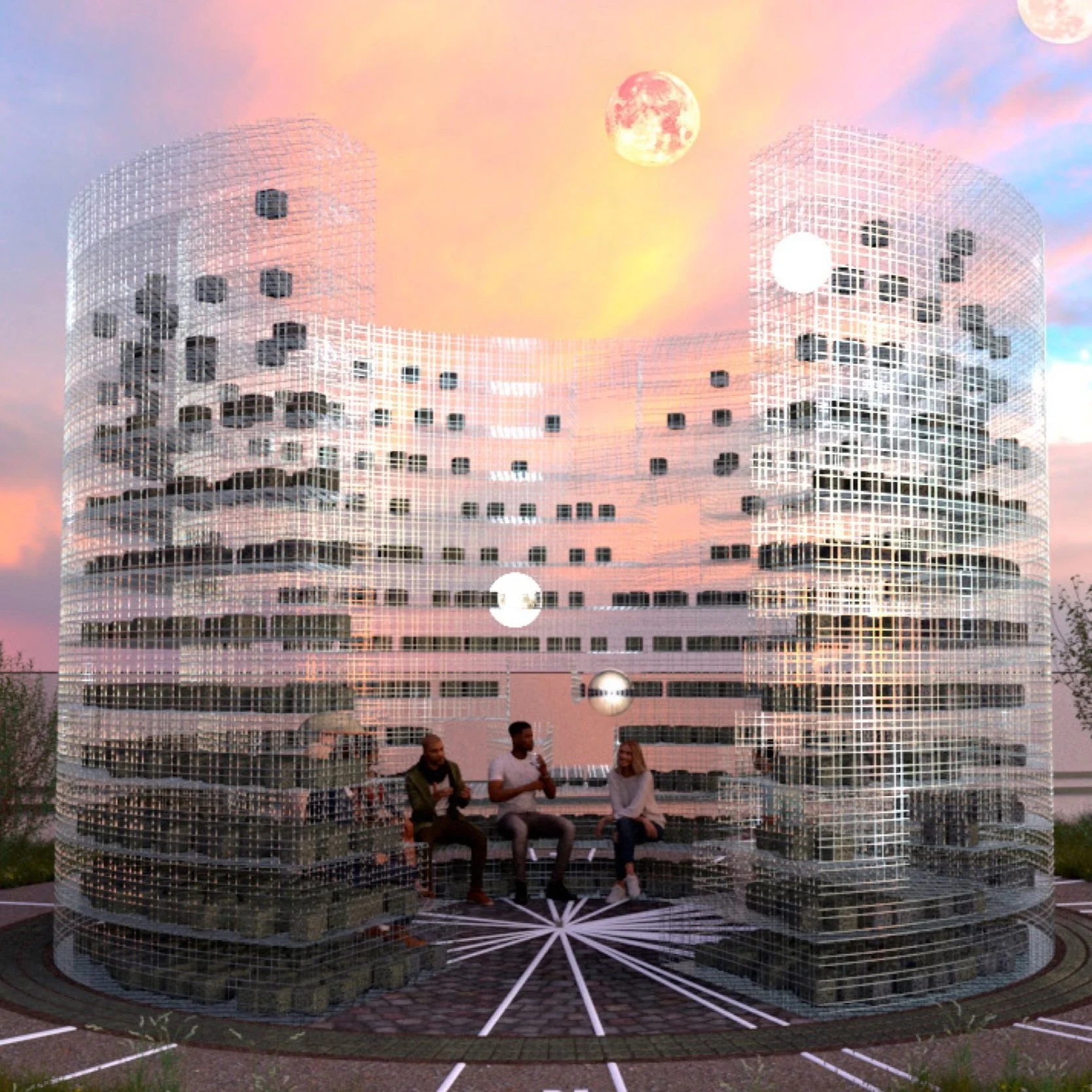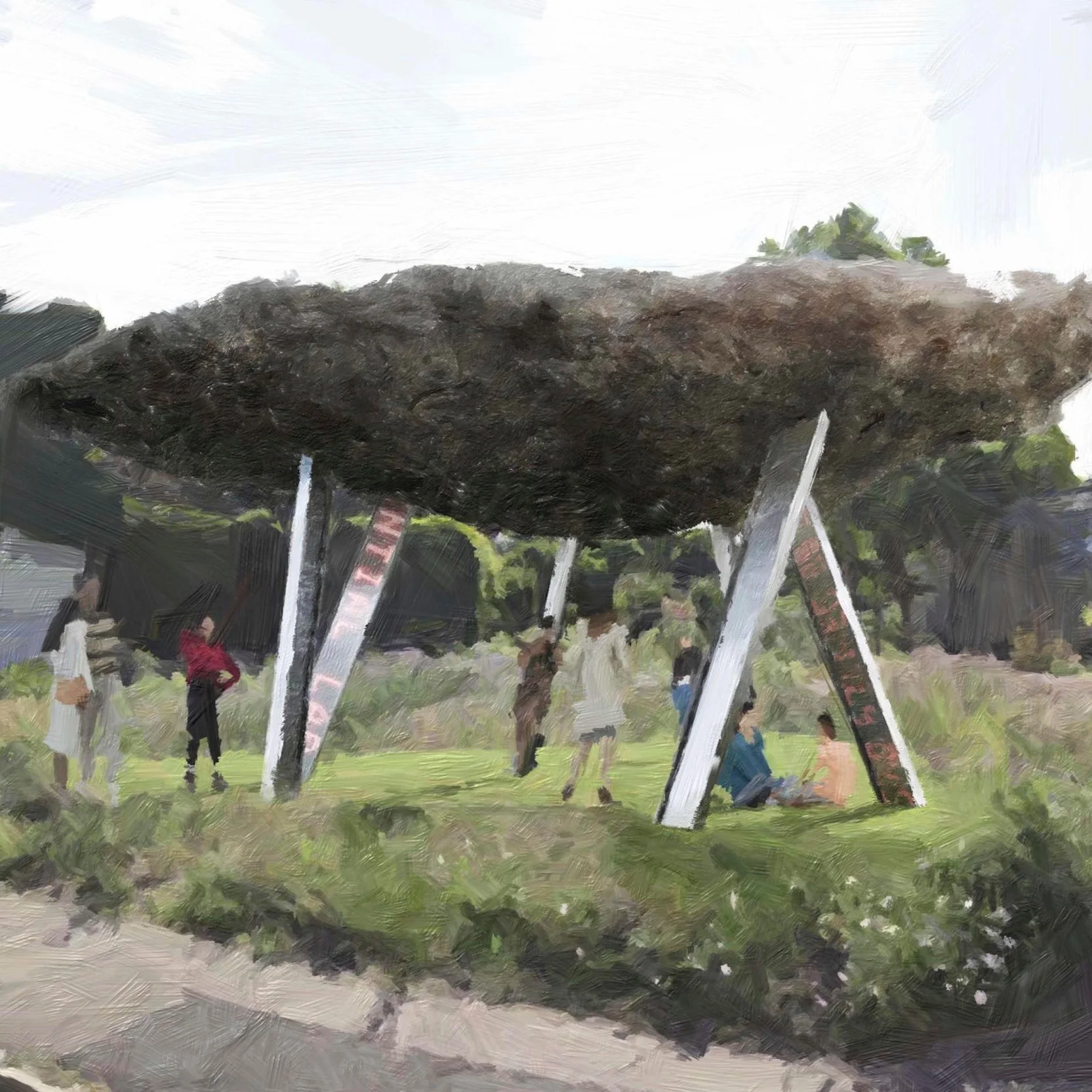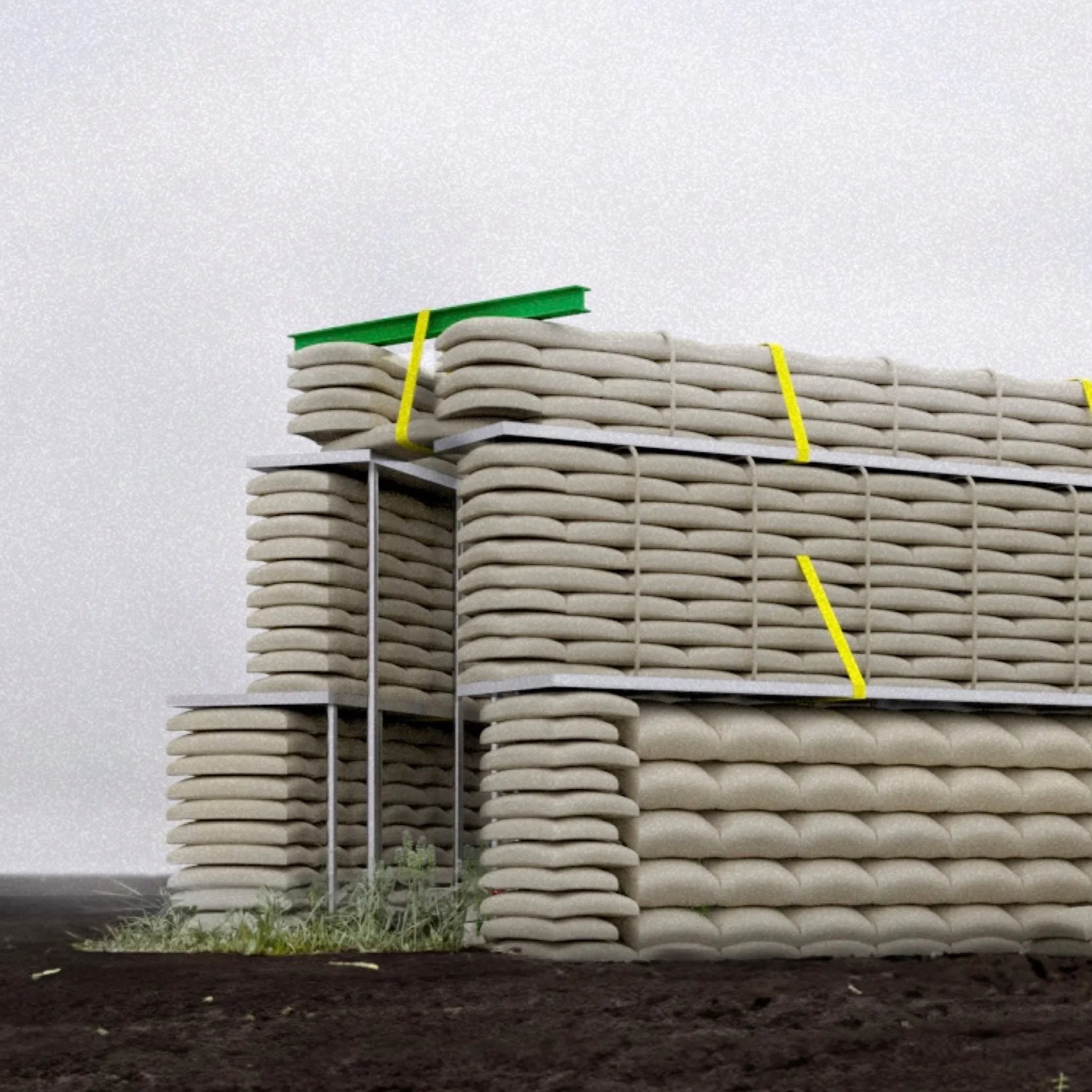THE WINNER OF THE 2024 ANTEPAVILION: FOUND(ATION)
BY Good Shape (Lioba Pflaum & Hanna Sheerin)
FOUND(ATION) is a relic for future archaeologists to discover. A beautifully crafted concrete pile on a stepped plinth. The concrete pile represents a fine example of an imagined mid 21stC. construction-design ethos and movement, which renounces the pouring of large quantities of ugly and wasteful concrete into the ground. Instead the invisible components in construction enjoy the craftsmanship and aesthetic refinement previously only seen in the above ground components of buildings. FOUND(ATION) uses the metaphor of beauty and fine work to insist that we put more thought into building foundations, often destined by their nature to long outlive the superstructures they support.
2024 BRIEF EARTHWORK
In 2024 for the first time Antepavilion is moving from its original home of Hoxton Docks. The new site in Southwark is equally feted for its history of art displays: the former home of Stompie, the T-34 Tank that over 25 years made Old Kent Rd folklore. For the past year it has been the home of Skip House.
As with previous Antepavilion briefs, 2024’s Earthwork may be freely interpreted. However, below are a few considerations for entrants in 2024.
A mechanical excavator and operator will be available for the duration of the build if required. The size and capacity may be selected by the winner to suit the build requirements of the proposal.
Entrants will be expected to engage with the archeology of the site, which includes a brick culvert and large wood beam (see resources). They should provide for the safekeeping or, better still, integration of any finds in their proposal. A professional archaeologist has carried out an initial investigation of the site by way of a limited trench investigation, so there may be other finds still to be uncovered.
SHORTLISTED:
FUTURE ARCHEOLOGY
BY LANSBURY-VINCELLI
The demolition and ‘regeneration’ of the Aylesbury Estate is one of London's great 21st Century social cleansing programmes. Thousands were dispossessed of their homes and communities erased in the name of its regeneration. As all physical and historic reference to the estate is being obliterated, only subterranean evidence of the predominantly minority ethnic, working-class community will survive, with the estate projected to become FUTURE ARCHEOLOGY.
Future Archaeology questions the destruction of London’s council estates by excavating one of the flats’ floor plans in the Antepavillon 2024 site - only half a mile from the Aylesbury. Sunk 1.2m deep, it reclaims the space of lost housing by welcoming people into a ‘political experience’. Utilising the reclaimed materials available the space will be created with gabions filled with granite setts - prominent symbols of urban rebellion:‘Sous les pavés, la plage!’. Under foot will be sand-coloured self-binding gravel.
SHORTLISTED:
LATER PAVILION
BY TOOZE WOOD
Later Pavilion will take the topsoil on site and transform it from brown to red using an artificial weathering process, and out of this alien earth create an urban plaza where normal, daily life can play out unobstructed. At night this urban and geological unconformity is lit by a miniature sun, a balloon made out of the tarpaulin of the previous Air Draft pavilion. Over the course of the summer, the pavilion will host a series of events to explore the histories and futures that soil contains.
SHORTLISTED:
MOONSTONE
BY KEVIN KELLY ARCHITECTS & STRUCTURAL ASSEMBLY
Moonstone is a reflection on the celestial and terrestrial realms intertwining, re-imagining what it means to connect the earth with the sky in the modern world. Constructed from reclaimed cobbles and gabions, it creates a lunar calendar/amphitheatre. Standing within, observers peer through translucent earthworks towards an external path with 36 markings, each aligning with the moon’s position on significant Roman calendar dates: Ides, Nones, and Kalends. The cobbles once firmly grounded, now seem to ascend, drawn upward in a dance with the lunar entity they seek to embrace.
SHORTLISTED:
PRIMITIVE DOMINO
BY ELSE
Primitive Domino" emerges as an enigmatic artifact discovered at a site previously deemed devoid of archaeological importance.
With its hovering rock-ish roof, "Primitive Domino" is reminiscent of prehistoric megalithic structures like dolmens, evoking a sense of the fundamental and elemental. In contrast, its support structure of slanted, standard steel I-beams exudes an industrial and modern aesthetic. The flowing open space calls to mind the quintessential modernist framework of column and slabs. Adding a layer of complexity, LED displays nestled within the I-beams' flanges come alive with scrolling text, akin to contemporary hieroglyphs. This digital dialogue stretches the perception of time even further into our collective digital future, casting a veil of mystery over the temporal origins of "Primitive Domino
SHORTLISTED:
SOIL STACKS
BY PABLO LUNA & DHRUV MEHTA
Soil Stacks is a structure of dry stacked bags reinforced by interweaving ropes. It is constructed by filling burlap bags with soil collected from the site, creating stackable units. These stackings generate a stepped façade, reconfiguring the status of soil from a horizontal to a vertical surface. The resulting courtyard allows for three carefully proportioned entrances allowing chance encounters.
SHORTLISTED:
THE LONDON BRICK 2050
BY SABI SPACE
The London Brick 2050 asks ‘Can we still sustainably work London clay into bricks?'
The proposal references the fossils in London clay, which now populate the stock bricks that make up the city’s fabric. The soils on the site include some clay but there are I other strata including old construction material, rubble and other waste. Can we make a London brick out of this mixture?
The London Brick 2050 is a giant London Stock Brick, made with clay and other materials found on site. The brick is enlarged to a giant scale to show the ‘new’ fossils. In this case, manmade material recycled from the site and from previous Antepavilions.
THE JURY
Nima Sardar (Studio-NimaSardar); Abbas Zahed; Russell Gray (Founder of Shiva Ltd); Jacqueline Stephen (Niall McLaughlin Architects); Ted Swift (Maich Swift); Ed Moseley (London Structures Lab)







